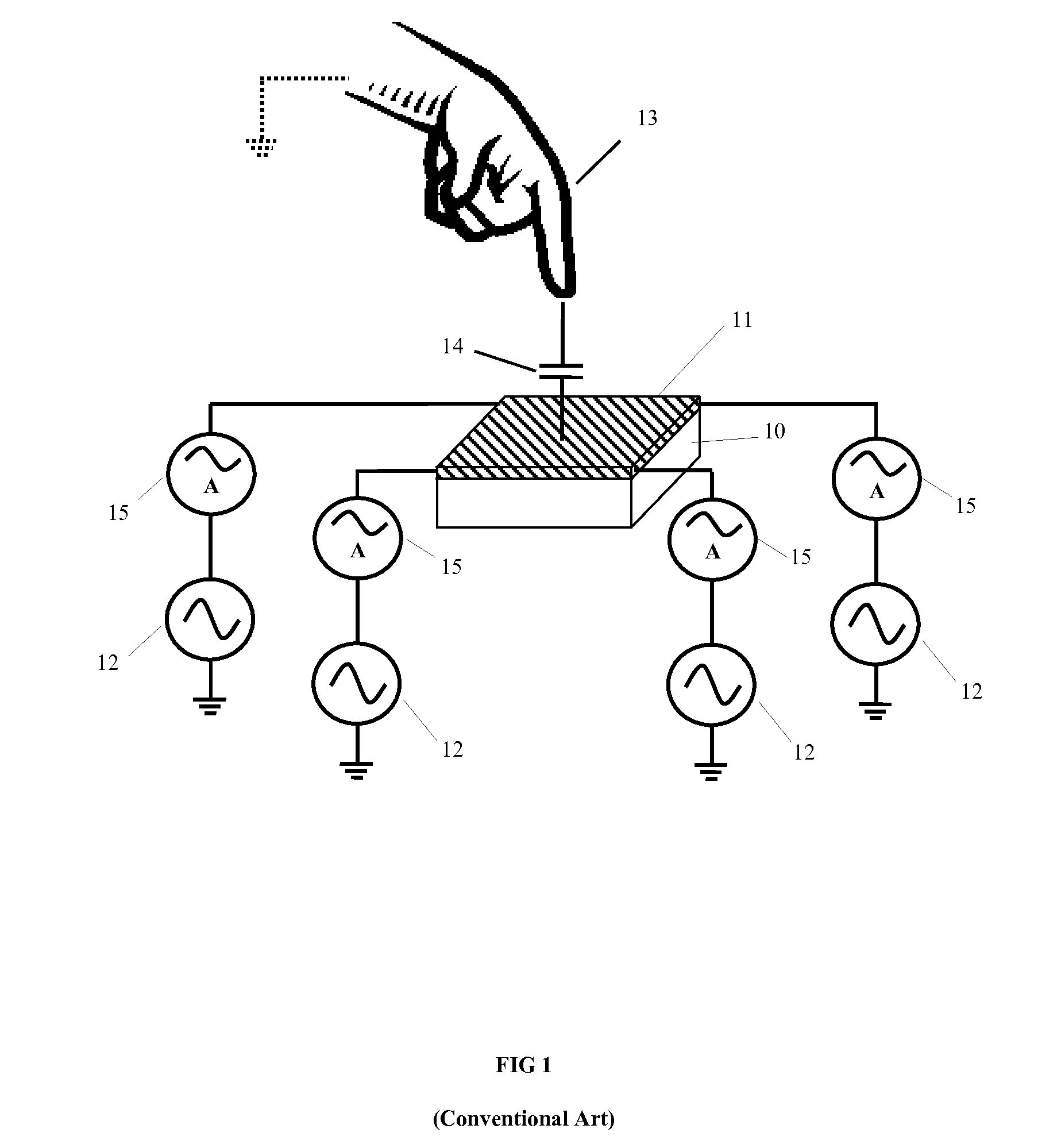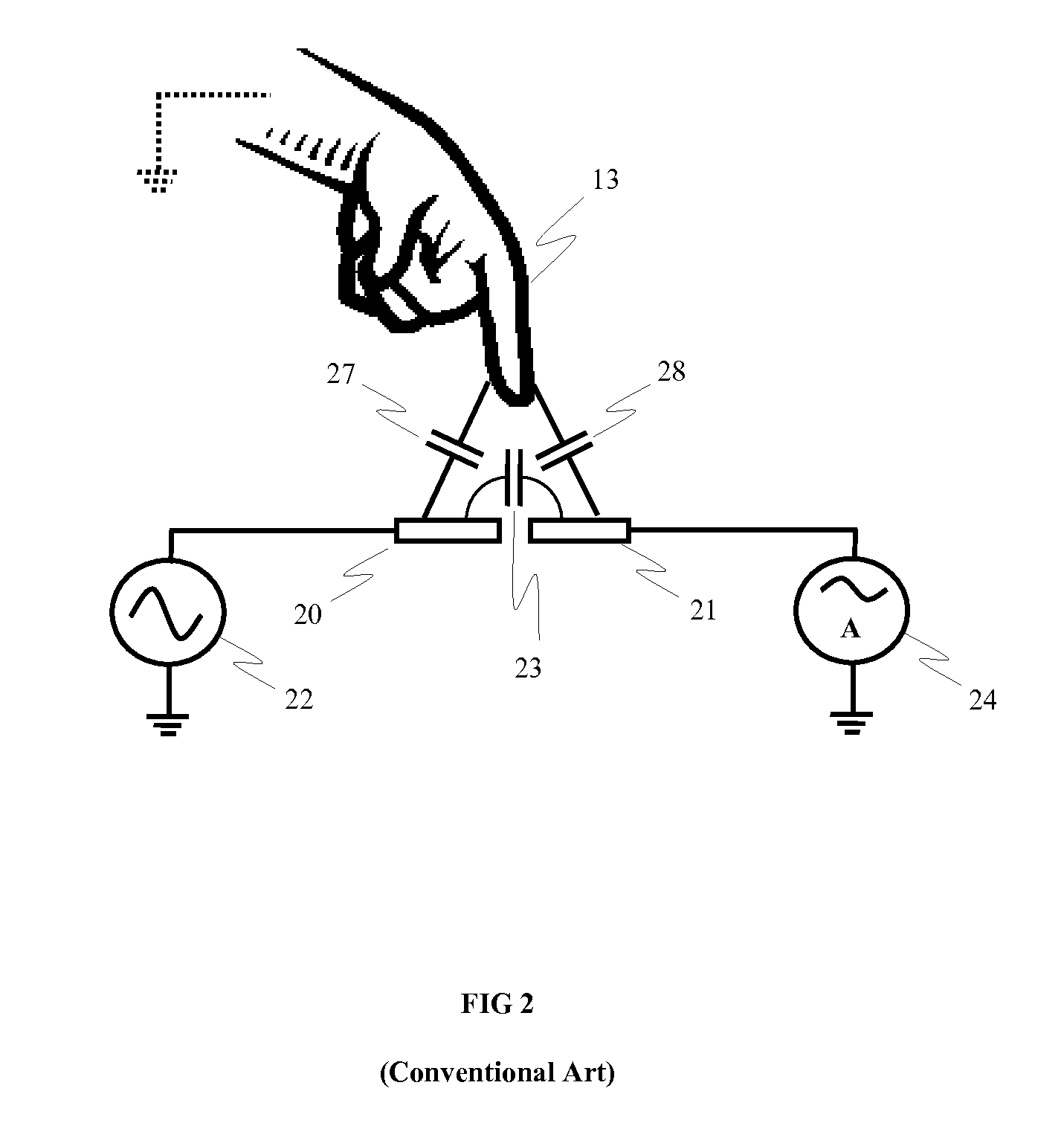Capacitive touch panel with force sensing
a touch panel and force sensing technology, applied in the field of capacitive touch panel devices, can solve the problems of reducing the cost and complexity of additional devices, and achieve the effects of reducing the cost and complexity, improving spatial resolution, sensitivity, and mechanical robustness
- Summary
- Abstract
- Description
- Claims
- Application Information
AI Technical Summary
Benefits of technology
Problems solved by technology
Method used
Image
Examples
first embodiment
[0099]A touch sensing device in accordance with the present invention is shown in FIG. 4. A first electrode array comprising drive electrodes 610 and sense electrodes 615 is formed in first electrode layer 608 on a first sensor substrate 605. The drive and sense electrodes are electrically insulated from one another, and may be similar to those found in a conventional projected capacitance touch sensor. A second electrode array of electrically separate conductive regions is formed in a second electrode layer 620 on a second substrate 625. The second electrode layer 620 is separated from the first electrode layer 608 by a deformable medium 630. The first array and second array of may be formed, for example, by patterning a layer of transparent conductive material—such as indium tin oxide (ITO) or the like—using standard photolithographic or printing processes. The first sensor substrate and second substrate 625 may be made of a transparent material such as, for example, glass or plas...
second embodiment
[0113]In a touch sensing device in accordance with the invention each sense electrode in the first electrode array is symmetrically divided along its principal direction into a first sense electrode section and a second sense electrode section. The conductive regions of the second electrode array are patterned and aligned so as to overlap at least partially the drive electrodes, to overlap at least partially the first sense electrode section of a sense electrode, but not to overlap the second sense electrode section. FIG. 12 shows a plan view the first substrate 605 illustrating an exemplary arrangement of the first electrode array with a diamond patterned sense electrode divided into two sense electrode sections. Also shown is the second electrode array of conductive regions 902 formed in the second electrode layer on the second substrate (not shown for clarity). Here the first sense electrode section 1210 does not lie beneath the conductive regions 902, yet the second sense electr...
fourth embodiment
[0117]In the present invention, the sense electrodes are divided into two sections that share a common geometric centroid. FIG. 14 is a plan view of an exemplary first and second electrode array in accordance with the present embodiment. Here, the sense electrodes 720 are divided into a first ring section 1410 and a second centre section 1420. The first ring section 1410 is arranged symmetrically around the second centre section 1420 such that the two sections share a common centroid. Floating conductive regions 902, formed in the second electrode layer on the second substrate, are patterned so as to overlap at least partially the drive electrodes 710, overlap at least partially the ring section 1410 of a sense electrode but not to overlap the centre section 1420 of a sense electrode. The ring section 1410 of the sense electrode therefore forms the force sensing intersection with the drive electrode, and the centre section 1420 of the sense electrode forms the touch sensing intersec...
PUM
 Login to View More
Login to View More Abstract
Description
Claims
Application Information
 Login to View More
Login to View More - R&D
- Intellectual Property
- Life Sciences
- Materials
- Tech Scout
- Unparalleled Data Quality
- Higher Quality Content
- 60% Fewer Hallucinations
Browse by: Latest US Patents, China's latest patents, Technical Efficacy Thesaurus, Application Domain, Technology Topic, Popular Technical Reports.
© 2025 PatSnap. All rights reserved.Legal|Privacy policy|Modern Slavery Act Transparency Statement|Sitemap|About US| Contact US: help@patsnap.com



